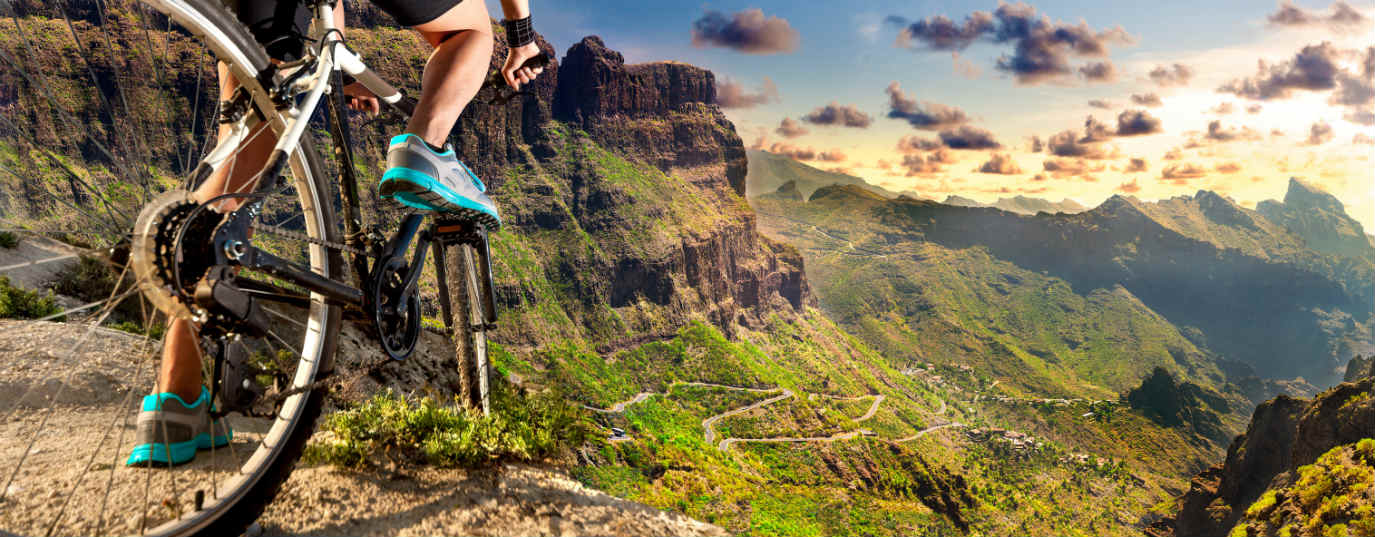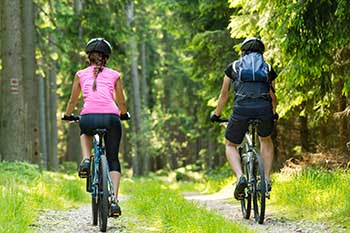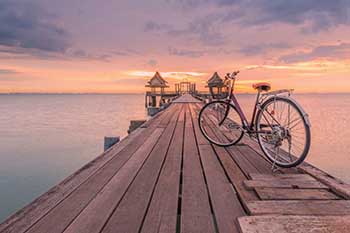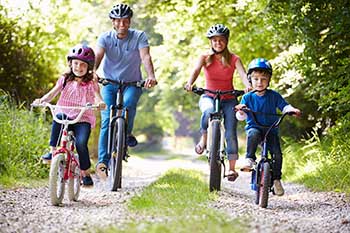Cycle tourism, riding along routes
Do you know this healthier and more sustainable form of tourism? In order to prevent pollution caused by traditional transports (planes, cars, etc.), travelling on a bicycle is a great option to take care of the environment, while at the same time we take care of our health and pocket
In large cities getting around on a bicycle is one of the best options to diminish air pollution, but choosing this form of tourism also involves significant advantages.
What routes can I take?
In addition to the classic rural tourism near our places of origin, there are different and well-known routes around the globe.
In Europe:
 EuroVelo routes, which are 12 international routes covering great distances and crossing the continent through different places. The total length of these routes reaches 60,000 km of which 20,000 are already in operation all across Europe.
EuroVelo routes, which are 12 international routes covering great distances and crossing the continent through different places. The total length of these routes reaches 60,000 km of which 20,000 are already in operation all across Europe.
The Netherlands: Like a very few, this bicycle-loving country offers several interesting routes; a very advisable week-long one is the route surrounding the Ijselmeer, the Netherlands´ inland sea.
Norway: This European country offers, among many, a nice 300 km route along the Lofoten Islands, located above the Arctic Circle, having the charm of pedalling while enjoying the Arctic Ocean.
France: As expected, one of the most recommendable routes in this country consists in those castles surrounding the Loire Valley. Fascinating landscapes throughout more than 2,000 km of open paths to get lost in.
Austria and Germany: On the shore of the Danube while pedalling along its cycle lane, we find the Donauradweg. This cycle lane runs parallel to the great Central European river from its source in Donaueschigen (Germany) up to Vienna, capital city of Austria. The German stretch, from its source up to its border with Passau, is 592 km long.
Spain: One of its best-known routes is Camino de Santiago which is usually taken on foot but more and more often by cycling. This famous international path has different starting points which may vary, from France or setting out from different parts of Spain.
The Americas:
 Pan-American Highway: It is one of the best-known routes crossing north to south.
Pan-American Highway: It is one of the best-known routes crossing north to south.
Argentina: Ruta Nacional 40. This route starts off the coast of the Argentine Sea, off the South Atlantic Ocean where the Patagonian steppes meet the ocean waters and the Strait of Magellan. Its specific starting point is Cabo Vírgenes. The end of the route is La Quiaca, bordering with Bolivia.
Mexico: A route can be taken along Sinaloa, from Durango up to Matazlán, along fantastic mountainous landscapes as Sierra del Espinazo del Diablo crosses it, with the route being 330 km long.
Canada:
The Quebec Route has become a fantastic Green Route with over 4,500 km in length, so most of the regions can be crossed on a bicycle without trouble.
Asia:
In Asia, you can choose the famous Silk Road.
How do I get prepared for the journey?
 - The ideal thing is to do it on routes that are authorised to practise this form of tourism on a bicycle, as we will find along the way a great deal of services and mainly, places where to spend the night at a quite economical price.
- The ideal thing is to do it on routes that are authorised to practise this form of tourism on a bicycle, as we will find along the way a great deal of services and mainly, places where to spend the night at a quite economical price.
- You should bring a map where the route can be seen clearly, always having planned our timings and knowing our limitations as cyclists.
- We have to see whether we need to take an extra supply of water and food in our panniers if we are to cross a long way throughout unpopulated or deserted areas.
- Always take spares for your bicycle and try to know as exactly as possible your bicycle behaviour on different surfaces, the state of its wheels, brakes, etc.
- A first-aid kit and warm clothes, or sun cream, depending on the destination you have chosen.
What advantages does cycle tourism have?
 - It does not pollute.
- It does not pollute.
- It is a very economical way of travelling.
- You can visit different places on foot –businesses, inland villages, coast or mountainous landscapes, etc.
- It is very healthy as you do exercise.
Next summer, if you are thinking of different holidays, and more importantly, more sustainable ones, choose cycle tourism. It is a zero-emissions activity that reduces air pollution and allows interacting with the environment.
In addition, in this article we leave you some tips to practice a sustainable tourism every time you travel.
Have you ever tried this form of tourism? Tell us about your experience!







